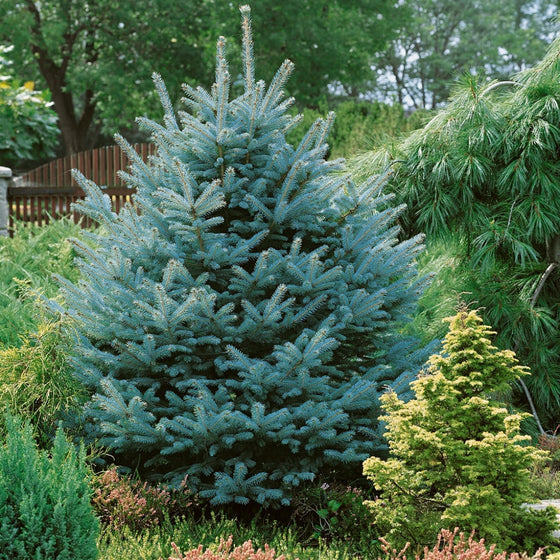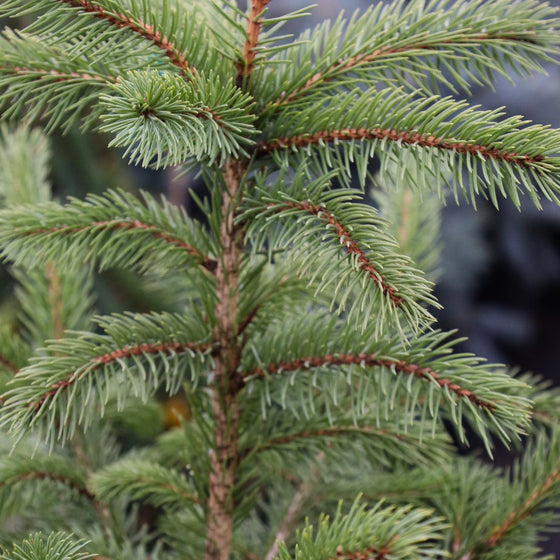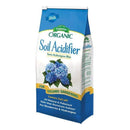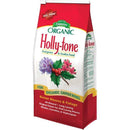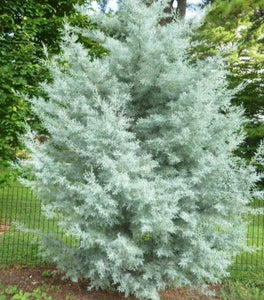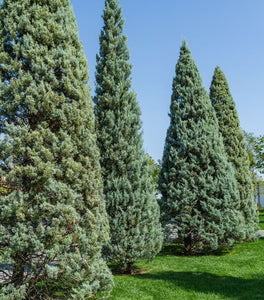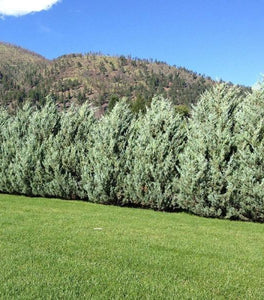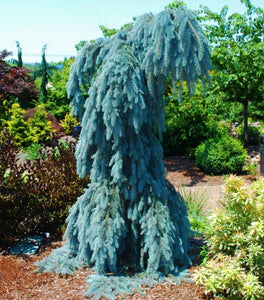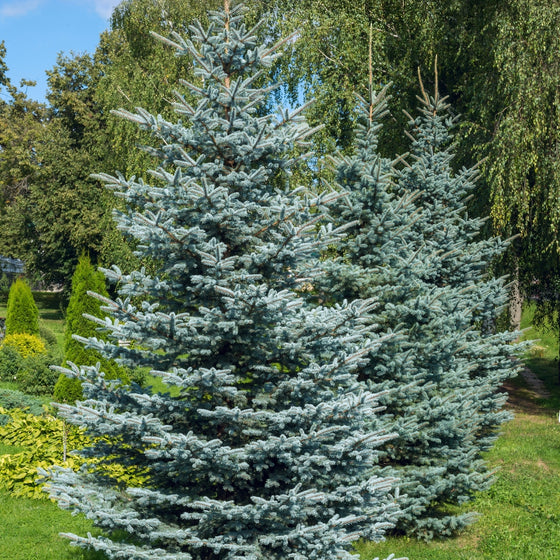
Images Depict Mature Plants
Colorado Blue Spruce – Hardy Evergreen Tree with Striking Blue Foliage
The Colorado Blue Spruce (Picea pungens) is a striking evergreen tree known for its stunning silvery-blue needles and stately, pyramidal shape. This conifer is a favorite choice for adding year-round color and texture to landscapes, with its vibrant blue-green foliage that provides a unique contrast to other plants in the garden. The dense, stiff branches of the Colorado Blue Spruce make it an excellent windbreak, privacy screen, or a focal point in the landscape. Hardy in USDA Hardiness Zones 2-7, the Colorado Blue Spruce is well-suited to withstand cold temperatures, making it a popular choice for colder climates and high-altitude locations where other trees may struggle.
Reaching a mature height of 30 to 60 feet with a spread of 10 to 20 feet, the Colorado Blue Spruce is an excellent choice for large landscapes, parks, and as a statement tree in front yards. Its symmetrical growth habit and dense branching pattern make it a visually appealing addition to any garden, whether used as a specimen plant or in group plantings for a natural privacy barrier. In addition to its ornamental value, the Colorado Blue Spruce provides shelter and nesting sites for birds and other wildlife, making it an excellent addition for enhancing biodiversity in your landscape.
Colorado Blue Spruce is relatively low-maintenance, thriving in full sun and preferring well-drained, slightly acidic soil. It is drought-tolerant once established, but young trees benefit from regular watering during dry periods to help their root systems grow strong. This conifer also has good resistance to deer and other browsing animals, which makes it an excellent choice for gardens that experience frequent wildlife activity. With its stunning silvery-blue color, robust growth habit, and year-round visual appeal, Colorado Blue Spruce is an ideal addition for creating a majestic and resilient landscape.

| Hardiness Zone: | 2-7 |
|---|---|
| Mature Height: | 30 to 60 Feet |
| Mature Width: | 10 to 20 feet |
| Classification: | Conifer / Evergreen |
| Sunlight: | Partial to Full Sun |
| Habit: | Densely branched, Cone Shaped |
| Foliage: | Silvery-Blue Green |
| Pruning Season: | Prune in late spring to maintain shape |
| Soil Condition: | Any well drained soil |
| Water Requirements: | Water well until established |
| Uses: | Extremely attractive when used as in the mixed border, foundations, or planted in mass |
How to Care for Colorado Blue Spruce
Be sure to read our planting instructions to ensure a healthy and happy Colorado Blue Spruce for years to come!
How do I plant a Colorado Blue Spruce tree?
Choose a site with full sun and well-drained soil. Dig a hole twice as wide and just as deep as the root ball. Place the tree so the top of the root ball is level with the soil surface, then backfill halfway, water deeply, and finish filling before watering again. Apply a 2–3 inch layer of mulch around the base to conserve moisture and regulate soil temperature. Avoid letting mulch touch the trunk to prevent rot.
How often should I water a Colorado Blue Spruce?
During the first year, water once or twice a week to help establish deep roots. After establishment, Blue Spruce is highly drought-tolerant and requires watering only during prolonged dry spells. Always water deeply rather than frequently to promote strong root development. Proper watering is especially important in the first two growing seasons.
When should I fertilize a Colorado Blue Spruce?
Fertilize in early spring before new growth begins using a balanced, slow-release fertilizer formulated for evergreens. Spread it evenly around the root zone and water thoroughly. Avoid high-nitrogen fertilizers, which can promote excess top growth over root strength. Once mature, Blue Spruce trees typically need fertilizing only every 2–3 years.

Does Colorado Blue Spruce need pruning?
Minimal pruning is required. Prune in late winter or early spring to remove any dead or crossing branches and maintain its natural pyramid shape. Avoid cutting into old wood, as Blue Spruce doesn’t regenerate from older stems. Its naturally symmetrical form usually requires little intervention.

